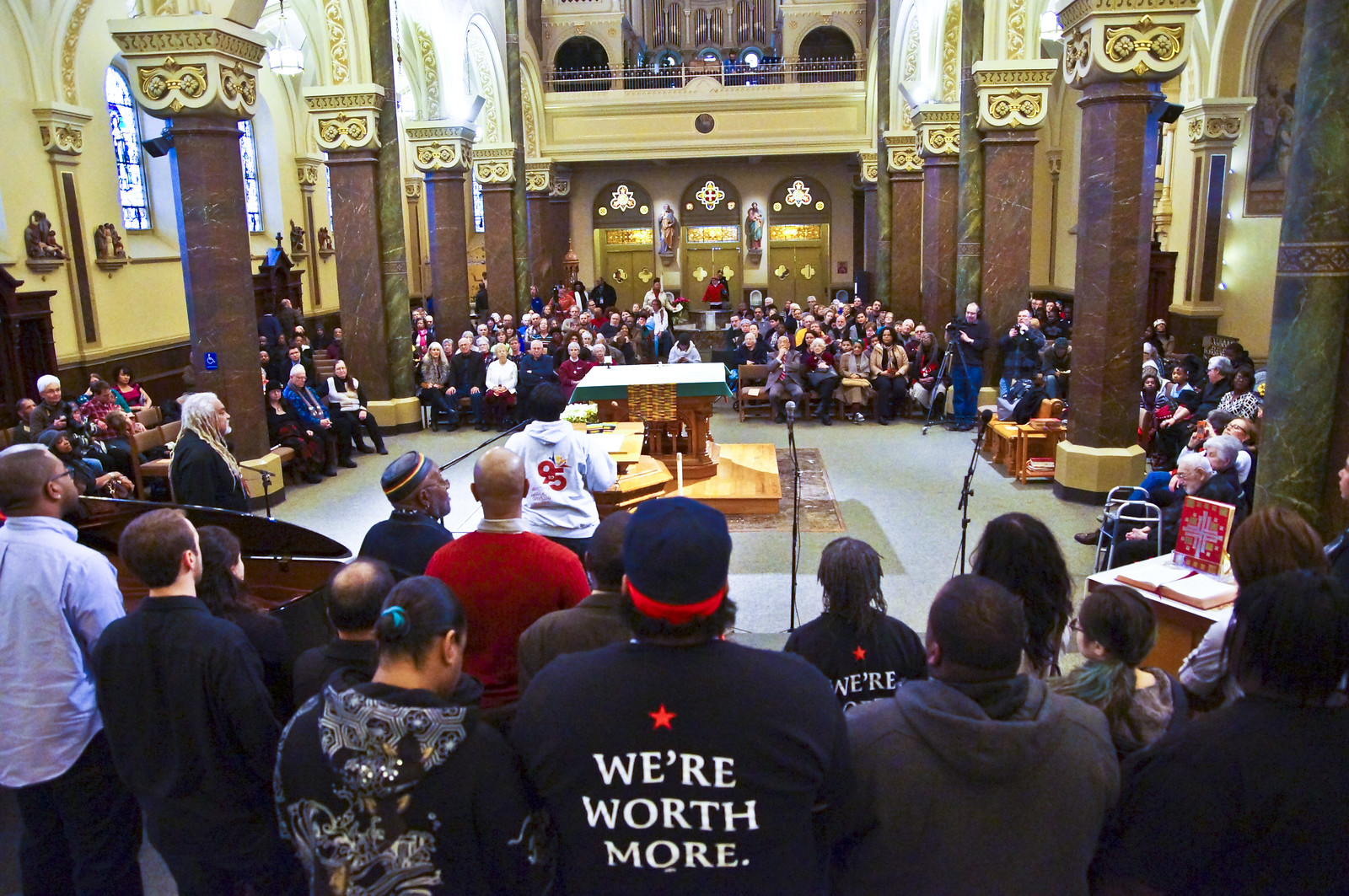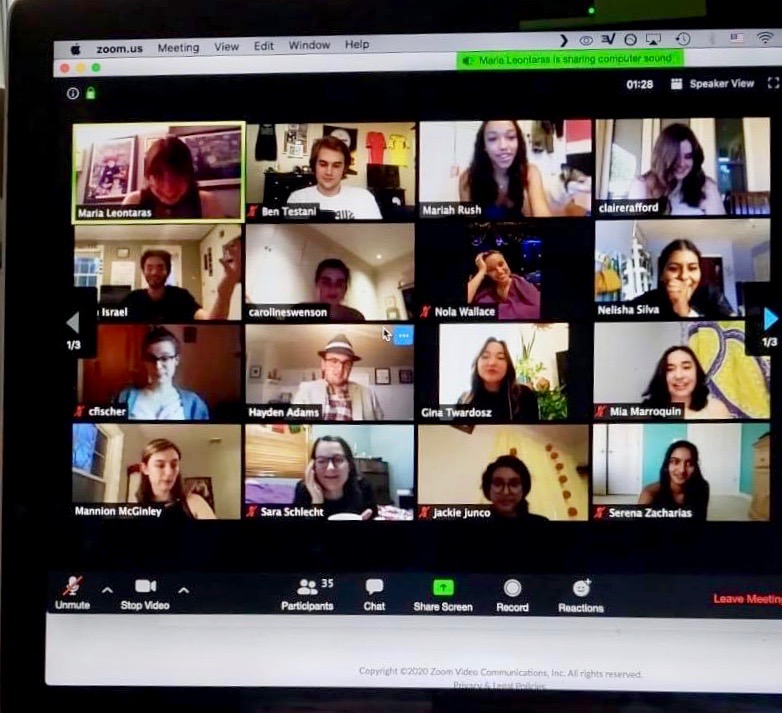Unique KC Star, Post-Dispatch, News-Leader project on epidemic of Missouri gun deaths
It started with a maddening statistic. Missouri has ranked first or second for 11 years as the state with the nation’s highest rate of African Americans who die in homicides. The Washington, D.C.-based Violence Policy Center says that 57 Missouri Blacks per 100,000 people were killed in 2017, nearly triple the national average.
Typically, news organizations mention this annual figure compiled by the center in a brief story and move on to other subjects.
For journalists at the Kansas City Star, looking for a major project that would go beyond routine daily coverage, the statistic proved to be the germ of a story idea.
Instead of merely recounting a seemingly endless stream of shootings on a daily or weekly basis, the idea was to do in-depth reporting on why Missouri ranks so high on the list, not only of deaths involving minorities but also violent crime generally.
“We wanted to go beyond daily reporting and look at a big issue – it’s causes and consequences,” says Ian Cummings, a Star editor who is overseeing the project. “We are looking for solutions, pushing coverage of what we have done before.”
The Star took an unusual approach, seemingly unprecedented in Missouri journalism. Instead of merely re-assigning a few staff members from their usual beats, the newspaper approached Report for America (RFA), a relatively new national program that provides funding to help local news media fill in significant coverage gaps.

“It’s ok, let her go,” yells a family member as Khalilah January sees her daughter Deosha “Princess” Purnell for a final time at her funeral, supported by her brother Cedric Huntley, right, and sister Dana Stegall on Friday, Sept. 25, 2020. Deosha, 15, was injured in a drive-by shooting Sept. 14 at a gas station in the Riverview neighborhood and later died in a hospital. A police spokeswoman said that while no arrests have been made in the case, the investigation continues. (Photo by Robert Cohen, rcohen@post-dispatch.com)

With financial support from RFA, the Star hired three reporters specifically to work on the project. They are Jelani Gibson, who was a journalism teaching assistant at the University of North Texas, Humeri Lodhi, a recent master’s degree recipient at Columbia University, and Kaitlin Washburn, who had been a reporter for the Sun-Gazette newspaper in central California. Lodhi and Washburn both have journalism degrees from the University of Missouri.
The Star also received help from the Missouri Foundation for Health, a 20-year old philanthropy organization one of whose purposes is to “eliminate underlying causes of health inequities.”
Altogether, spending on the project from various sources may approach $500,000.
Todd Franko, a former Ohio newspaper editor who is director of local sustainability and development at Report for America, called the Star-Foundation for Health alliance “a fantastic example of two vital groups coming together during a crisis. That they were strangers to each other and united in this way is very special.”
Because gun violence is a major problem in the state’s three biggest cities, the Star enlisted the St. Louis Post-Dispatch and the Springfield News-Leader, which agreed to take part in a collaboration among news organizations that often are competing.
The result was a two-year project that went public in mid-October with the title, “Gun Violence in Missouri – Seeking Solution.” The news stories and editorials published so far in the Star can be seen here.
In its first major story, the Star said it had interviewed more than 75 “residents, activists, faith leaders and survivors” about the gun violence problem generally. One initial conclusion was that local residents in high-crime areas “said law enforcement was there to police them — not to protect them.”
The newspaper said that experience reflects the nation as a whole, where experts say “a lack of trust in police drives gun violence.”
Police officials agree that many homicides and non-fatal shootings go unsolved because of a lack of witnesses, “but many residents say police create an environment of fear in Black neighborhoods that erodes public safety,” the Star said.
As its initial part of the project, the Post-Dispatch published a three-part series in mid-November. One headline said, “Gun violence in Missouri: ‘There’s no war going on, but if you count up the body count … you might think there was.’ ”
The main story was bylined Robert Patrick and Rachel Rice and was accompanied by photos by the newspaper’s Robert Cohen of the kind not usually seen in media crime coverage. For example, one of them showed members of the Urban League’s Serving Our Streets gun de-escalation initiative taking a report from a woman shot in her wrist during a domestic dispute in a nightclub.
At the time, the city had recorded 225 homicides, “putting it at risk of reaching a homicide rate not seen in decades,” the newspaper said. In that story, the Post-Dispatch quoted an expert casting doubt on the U.S. Justice Department’s claim that it had reduced homicides by sending federal agents into St. Louis, Kansas City and other big cities this summer.
In its own first story in the series in mid-November, the Springfield News Leader said that in Missouri’s third-largest city, domestic violence “plays an outsized role in the fatal shootings of women, accounting for 80 percent of them” between 2014 and 2018. Across the state, domestic violence was responsible for just one-third of the nearly 400 women shot and killed during the period.
The newspaper said Springfield, despite its relatively small size, has been ranked the 11the most violent in the nation. The Kansas City and Springfield newspapers interviewed more than a dozen residents, officials and experts and analyzed police investigations, court documents and medical records in three months’ reporting in the project’s first phase.
The project is not limited to published newspaper stories. It includes online sessions open to the public. After sessions based in Kansas City andSpringfield, St. Louis was the site of the most recent discussion, on Dec. 8. One speaker, retired St. Louis police officer Robert Jordan Jr. said many city residents believe that if they are victimized, they should “shoot first and ask questions later — why should they call the police?”
Initial reaction to the newspapers’ work has been positive.
Jessi LaRose of the Missouri Foundation for Health said, “It has been exciting to see the diversity of the stories, with the focus on domestic violence in Springfield and the public health approaches underway in St. Louis.” LaRose said she hoped the project will have “longer-term impacts on how firearms violence is covered across the state.”
It is coincidental that the gun violence reporting is taking place during the COVID-19 pandemic. There are some parallels, because a major focus of the reporting is on the public health aspects of gun violence.
Reporting by the Star in St. Louis concluded that gun violence “intersects with almost every medical specialty: emergency room physicians, trauma surgeons, psychiatrists to help address lasting PTSD, dermatologists for wounds, and pain management specialists.” The newspaper quoted Kristen Mueller, a former emergency room physician at Washington University who now is studying gun issues there, as saying, “Just like COVID, [gun violence] is touching every aspect of our medical care.”
Because the project is in its early stages, it is not certain how it will evolve as reporters learn more about the scope of the violence problem.
Next year, “Gun Violence in Missouri” will concentrate more on potential solutions to violence issues, says Star editor Cummings.
Speaking in advance of the St. Louis-based community session, Cummings said, “We’ve seen tremendous interest and engagement. We received nearly 400 rsvps in advance of our first two events and attracted more than 11,000 viewers across all platforms. We look forward to building on this success heading into 2021.”
Ted Gest is president of Criminal Justice Journalists and Washington bureau chief of The Crime Report. He formerly was a reporter and editor at the St. Louis Post-Dispatch and U.S. News & World Report. He was a founding member of the St. Louis Journalism Review in 1970. He is a graduate of Oberlin College and the Graduate School of Journalism at Columbia University.


